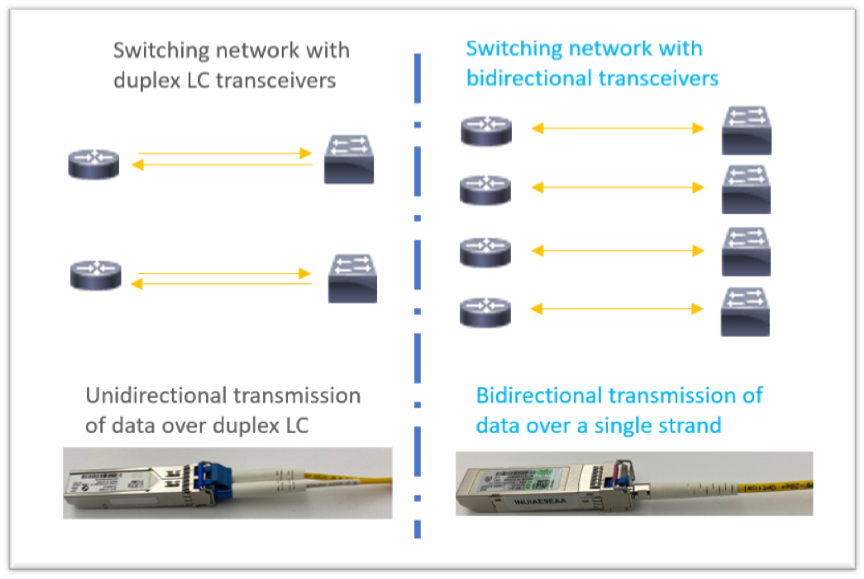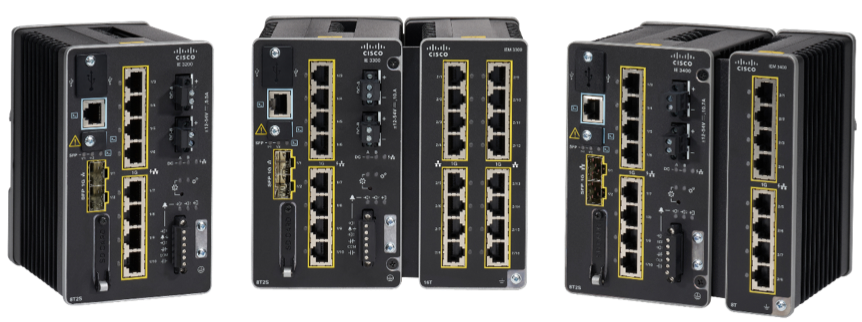
































Subscribe to Cisco Optics Blog by Email
Written by Kaushik Mittra, Product Manager, Transceiver Modules Group
To support the growth of service provider and IoT (Internet of Things) applications and accommodate the explosion in network bandwidth that will accompany this transformation, network operators are always looking to reduce cost and increase utilization of existing fixed assets. Next generation initiatives such as Industry 4.0 (in the Manufacturing sector) and the proliferation of 5G services (by service providers) are leading network operators to optimize the performance of networking equipment in existing deployments.
 Figure 1. Applications that deploy bidirectional transceivers -Service Provider and Industry 4.0.
Figure 1. Applications that deploy bidirectional transceivers -Service Provider and Industry 4.0.Cisco offers a family of 1G bidirectional transceivers specifically for these markets and applications. The main features of these transceivers are highlighted in the table below.

 Figure 2. The Cisco 1G bidirectional transceivers provide several benefits for both service provider and IoT applications.
Figure 2. The Cisco 1G bidirectional transceivers provide several benefits for both service provider and IoT applications.These transceivers offer the following benefits that are valued by network operators -(1) operation over a single strand of fiber, and (2) industrial temperature operation.
One of the quickest ways to increase the utilization of existing fiber installations is to deploy bidirectional transceivers. While most 1G SFP transceivers use a duplex LC connector and two strands of fiber to communicate, the bidirectional transceiver transmits and receives data on the same strand of fiber, thus allowing the customer to double the utilization of the existing fiber. Figure 3 illustrates how the bidirectional transceiver doubles the amount of network equipment that can be attached to the same set of 4 fibers, compared to regular transceivers.
 Figure 3. Increasing utilization of existing fiber.
Figure 3. Increasing utilization of existing fiber.Service Providers typically deploy bidirectional transceivers to connect access equipment back to the central office. For example, the Cisco NCS4200 platform is deployed at the Central Office and connects to a NID (Network Interface Device) such as the NCS520. The 1G bidirectional transceiver is ideally suited to such applications.
 Figure 4. Connecting central offices to the NID with 1G bidirectional transceivers.
Figure 4. Connecting central offices to the NID with 1G bidirectional transceivers.Another example involves using the ASR9000 edge routing platform to the NCS540 access router. The ASR9000v is environmentally hardened, and is deployed adjacent to, or remotely from, its Cisco ASR 9000 Series host. When deployed with a Cisco 1G bidirectional transceiver, the ASR9000 edge routing system can connect to a remote access router (NCS540) upto 80Km away.
 Figure 5. Connecting edge and aggregation routers to remote access routers.
Figure 5. Connecting edge and aggregation routers to remote access routers.Besides increasing the utilization of the fiber, the bidirectional transceiver also allows for increased network resiliency. The available second strand of fiber can now be used to provide a redundant link thus allowing for a dual homing strategy.
Many applications in IoT require network equipment to be deployed in environments that are not temperature controlled. For example, Cisco Industrial Ethernet Rugged Switches are often deployed in roadside cabinets for a transportation network, where the ambient temperature can reach as high as +70C or fall as low as -40C. In such situations, the routers and switches deployed are rated for industrial temperature operation.
 Figure 6. Cisco Catalyst IE 3200, 3300, 3400 rugged switches.
Figure 6. Cisco Catalyst IE 3200, 3300, 3400 rugged switches.For proper network operation in such environmental conditions, Cisco offers 1G bidirectional transceivers whose metal housing operating temperature can be anywhere in the range -40C to +85C. As an example, the 1G bidirectional transceivers are deployed with Cisco Connected Grid Switches (CGS 2500) designed for harsh environments often found in the energy and utility industries. The CGS 2520 provides the control and communication required to support utility substation applications such as generation, transmission, and distribution of electrical energy.
In summary, the Cisco 1G bidirectional transceiver enables mission critical applications and improves network resiliency for network operators. For a complete list of Cisco platforms that have been qualified with 1G industrial temperature transceivers, please check the Cisco Optics Compatibility Matrix.
 Tags quentes :
Cisco Industrial IoT (IIoT)
#CiscoOptics
#CiscoOpticsBlog
Cisco Optical Networking
Cisco optics
Cisco 1G SFP
Cisco SFP
Cisco IE 2000
Cisco IE Switches
Tags quentes :
Cisco Industrial IoT (IIoT)
#CiscoOptics
#CiscoOpticsBlog
Cisco Optical Networking
Cisco optics
Cisco 1G SFP
Cisco SFP
Cisco IE 2000
Cisco IE Switches